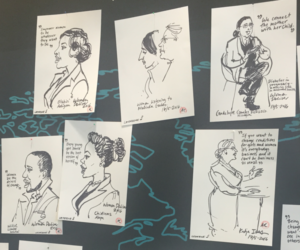How to Best Serve Youth; Learnings from Women Deliver
One of the defining features of the recent Women Deliver conference was the spotlight on youth leaders from around the world. I felt their strong presence from the beginning of the first plenary, when 26-year old Zimbabwean Yemurai Nyoni declared “As young people under 30, we have the power to disrupt every cycle that causes harm to young women and girls.”
Seeing the passion of young people like Yemurai makes me both hopeful, but also saddened, because I know that such conviction stems from the frustrating experience of being face-to-face with the many harmful barriers that prevent young people in from reaching their full potential. With these stories in mind, I was inspired to attend two presentations, Adding it Up: Solutions for Adolescents’ Sexual and Reproductive Health and Overcoming Barriers to Young People’s Access to to Contraception, which reminded me of the larger context in which these barriers exist and also served as a call to action to ensure that our programs and policies not only consider these barriers, but also effectively work to reduce them.
The Guttmacher Institute’s presentation on its newest edition of Adding It Up: Costs and Benefits of Meeting the Contraceptive Needs of Adolescents made the need for improved access loud and clear. According to its newest report, 11.3 million 15-19-year-old women living in sub-Saharan Africa need modern contraception – and only one third is using modern methods. The report found that providing contraception to all women in need would cost approximately $30 US dollars per user annually, and would come with a number of health benefits for women and girls. For example, they estimate that unintended pregnancies would drop by 2.7 million (70%) per year, and annual maternal deaths from complications during pregnancy and childbearing would fall from 13,000 to 8,200.
The need for improved access was clear, but in the Overcoming Barriers to Young People’s Access to to Contraception discussion with Dr. Chandra-Mouli of the World Health Organization, I was reminded that we need to be intentional about how we develop and deliver programs to improve access. According to his presentation a number of popular strategies designed for youth either fail to reach the key, most-at-risk populations or are not fully or effectively implemented, and therefore do not promote the desired change in knowledge, attitudes or practices. Dr. Chandra-Mouli explained that adolescent’s use of sexual and reproductive health services can be increased when four programmatic approaches are combined: 1) Training and supporting providers to be non-judgmental and friendly to clients, 2) Ensuring that health facilities are welcome and appealing, 3) Informing participants about local services and encouraging to use them, and 4) Motivating community members to prioritize providing health services to youth. He pointed to a number of strategies that play on these themes, including training entire clinics to offer youth-friendly services and offering a full-range of contraceptive options to all clients – no matter what their age or marital status. He challenged us to think critically about our programs and how we could improve our impact by expanding our reach and integrating the combined approach above.
Fortunately, HC3 has created a package of social and behavior change communication materials to help healthcare workers provide youth-friendly services that account for the full range of modern contraceptive methods, including LARCs. The materials include a series of posters, take-home brochures for clients, a video for providers about how to counsel young women and girls, and an accompanying video discussion guide (perfect for facility-wide trainings!) You can find these materials and an evidence fact sheet at http://healthcommcapacity.org/larcs.
I’m comforted knowing that these materials were designed to address the challenges discussed by the Women Deliver youth leaders and Guttmacher Institute, and incorporate approaches discussed by Dr. Chandra-Mouli. I encourage you to check them out and join me in helping young people advocate for their wants and needs in the clinic, and not just on the Women Deliver stage.









Leave a Reply
Want to join the discussion?Feel free to contribute!